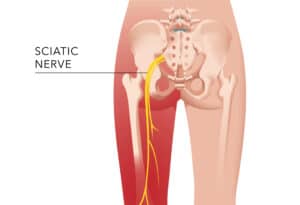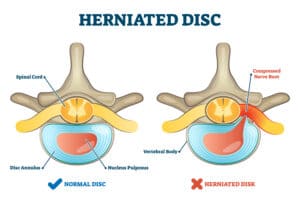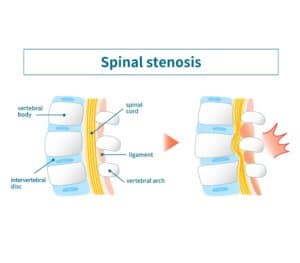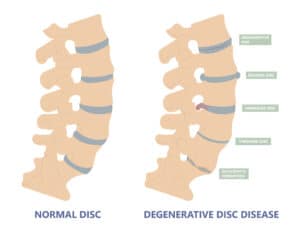Back pain may start off mild and seem like a small nuisance, but left untreated it can become debilitating. But when the pain starts to become too much to handle, the first question many people ask is, “What doctor should I see for back pain?” With so many options and types of specialists available, it’s common to feel unsure about where to begin. From chiropractors and primary care providers to specialists like orthopedic surgeons, finding the right care can make all the difference in managing pain and preventing further issues.
If you’re one of the 39% of American adults suffering from back pain, this guide is here to help. Keep reading to discover the various types of specialists and doctors who treat back pain, along with their different approaches to treatment. You’ll also find out why visiting a chiropractor or pain management expert might just be one of the most effective steps you can take for relief.
Common Types of Back Pain
Understanding the types of back pain can help you identify potential causes and decide when to seek medical care. Here are some common conditions associated with back pain:
Wear and Tear
Everybody experiences general wear and tear as we age and participate in various low to high impact activities. Wear and tear along your spine may occur at a younger age if you regularly participate in high-impact activities or have had an injury that went untreated or didn’t heal properly. But don’t ignore the warning signs. This type of back pain can occur when too much pressure is put on certain parts of your back and can have negative results long-term .
Sciatica
Sciatica specifically refers to pain caused by an aggravated nerve in your lower back called the sciatic nerve. Through intense pressure or injury on this nerve, you can experience pain in your lower back that also radiates through your hip and buttocks, and down through one leg to your foot. Back pain caused by sciatica can also be caused by the Piriformis Muscle.
Herniated Disc
A herniated disc, also commonly referred to as a slipped disc, occurs when the spongy tissue that separates your vertebrae slips out of its normal position. When a disc is out of place it is no longer able to properly absorb the shock of your daily activities, which can cause the vertebrae to rub together. A herniated disc may also put pressure on a nearby nerve, causing back pain.
Spinal Stenosis
Spinal stenosis occurs when the spaces within your spine narrow, which can put pressure on the spinal cord and nerves. This condition often presents with pain, numbness, or weakness in the back, neck, arms, or legs, and may worsen over time. If untreated, spinal stenosis can lead to mobility issues, impacting daily activities.
Degenerative Disc Disease
Degenerative disc disease also occurs as we age and specifically relates to the discs that separate your vertebrae as well. These discs can begin to break down or degenerate, meaning their once spongy, liquid-filled tissue dries out and no longer cushions your vertebrae effectively. Depending on where the disc degeneration occurs, it can also cause pain in your shoulder, arm, and hand, or down the back of your leg.
What Doctor to See for Back Pain
When it comes to back pain, knowing the types of healthcare professionals who specialize in diagnosing and treating these issues can help guide your path to recovery. Here’s a breakdown of primary care providers, spine specialists, and chiropractors who can all play a role in managing back pain.
Primary Care Providers
Although back pain specialists are recommended, these medical professionals are often where your journey will begin:
- Family Physicians: They’re the jack-of-all-trades in the medical world, offering comprehensive care for patients of all ages. They can diagnose common back issues and refer you to specialists if needed.
- Internists: Specializing in adult medicine, these types of medical professionals are best for managing complex conditions that might be contributing to your back pain.
- Nurse Practitioners and Physician Assistants: Often working under a physician’s guidance, they can also help manage pain and make referrals.
While these primary care providers are excellent starting points, remember that dedicated pain specialists or chiropractors often have more specialized knowledge and tools at their disposal for treating persistent back pain.
Spine Specialists
Spine specialists have advanced training to treat specific back conditions, especially when primary care treatments aren’t sufficient.
- Neurologists: They specialize in treating nerve-related back pain, like sciatica and herniated discs, offering advanced diagnostics and therapies.
- Orthopedists: Specializing in the musculoskeletal system, they’re well-versed in treating bone and joint issues that might be causing your back pain.
- Neurosurgeons and Orthopedic Surgeons: When conservative treatments fail, these surgeons can perform procedures ranging from minimally invasive techniques to complex spinal fusions.
- Pain Management Specialists: These experts help manage chronic pain through medications, injections, and/or lifestyle modifications.
While these specialists offer invaluable expertise, don’t overlook the potential benefits of chiropractic care or dedicated pain management clinics. These options often provide more holistic, long-term solutions for back pain.
Chiropractors
Chiropractors provide non-invasive, hands-on treatments focused on spinal alignment and nervous system health. Chiropractic care for back pain is a natural, safe, and effective solution to treating your back pain without the risks associated with other types of treatment. They do not prescribe medications so you don’t have to worry about side effects, nor do they perform risky surgeries that can cause complications and often come with long recovery periods.
Instead, your chiropractor will use non-invasive techniques to help relieve your pain and get to the root cause. Here are some of the treatments a chiropractor typically provides for their back pain patients:
- Spinal Adjustments: Realigning vertebrae to relieve nerve pressure and reduce pain.
- Spinal Decompression: This is a nonsurgical technique that works by gently stretching your spine and taking pressure off of your back.
- Soft Tissue Therapy: Techniques such as active release therapy (ART), Graston, trigger point, and massage to alleviate muscle tension.
- Rehabilitation Exercises: Strengthening exercises to support the spine and prevent future injuries.
So, why consider a chiropractor?
They offer a comprehensive, hands-on approach to back pain. Unlike general practitioners who might only see you for a few minutes, chiropractors spend more time understanding your unique pain patterns and developing personalized treatment plans. Plus, their focus on non-invasive techniques means you might find relief without resorting to medication or surgery.
How Our Chiropractors Can Help You
In the end, deciding on what doctor to see for back pain will depend on your specific condition, symptoms, and preferences. Don’t be afraid to explore multiple options or seek second opinions. Your journey to a pain-free back might involve a combination of these specialists, working together to craft the perfect treatment plan for you.
At Pro-Care Medical Center, our team of back pain experts are here to help with clinics throughout Central Texas, including San Antonio and Austin. Along with primary care and chiropractic care, you’ll get all the help you need in one modern, convenient location. To learn more about what to expect, find a location near you or schedule an appointment online.
Make sure to check out our YouTube channel for our free exercise videos to help you find back pain relief at home.









